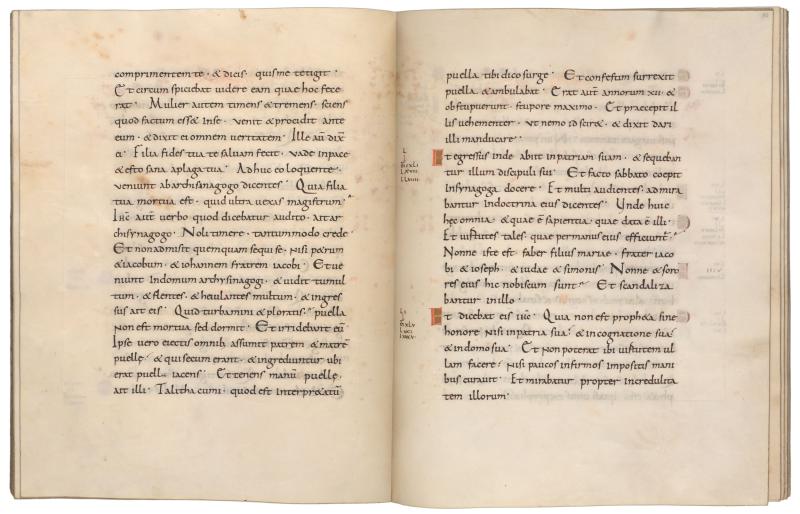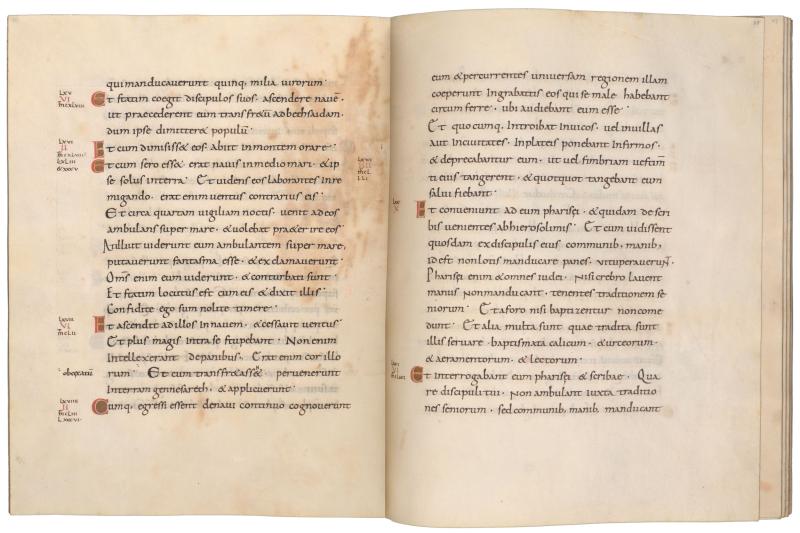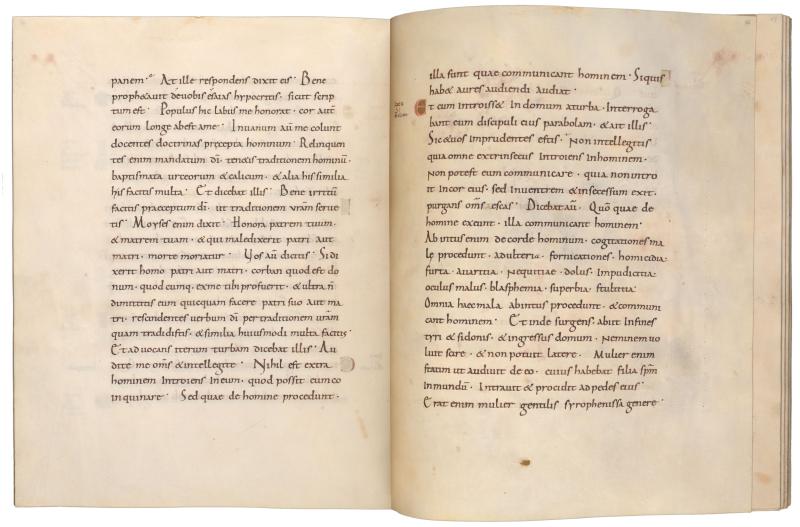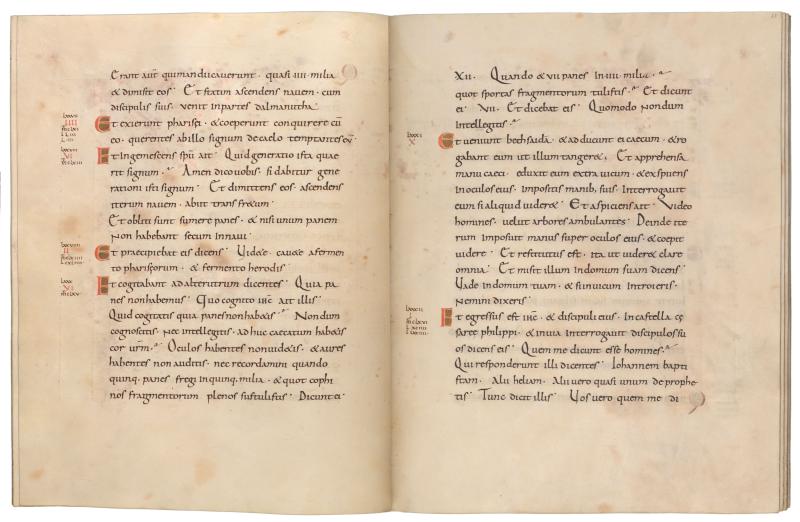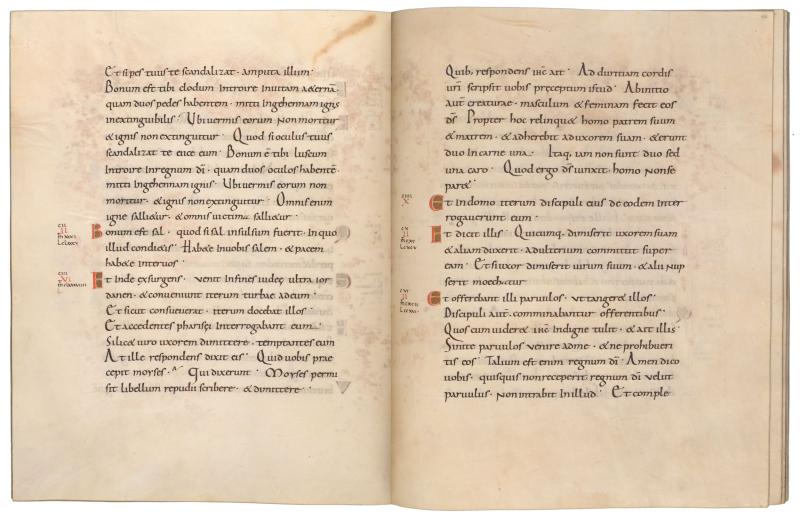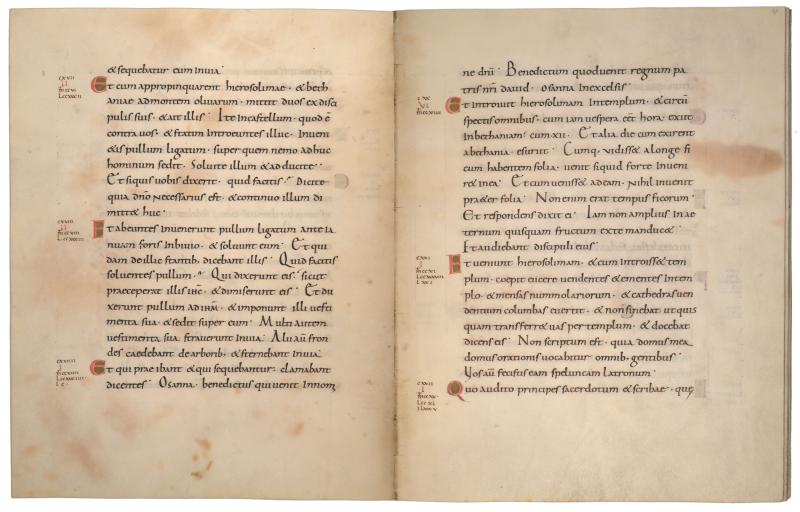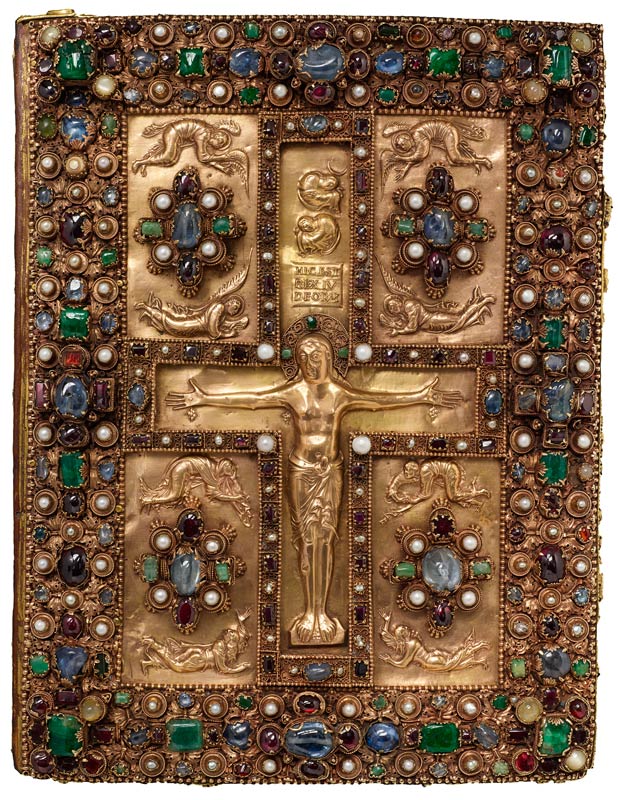
Named after the Abbey of Lindau on Lake Constance (Germany), where it was once housed, the Lindau Gospels ranks as one of the great masterpieces from the collection of the Morgan Library & Museum. Its jeweled covers constitute one of the most important of all medieval treasure bindings. Quite unusually, the manuscript’s exquisite covers are in fact from entirely different regions and moments in time. Dating to the late eighth century, the back cover is the earliest component of the book and was likely made in the region around Salzburg (Austria). The front cover, in contrast, dates to nearly a hundred years later (ca. 870–80) and was likely produced in what is today eastern France. The manuscript itself is later still (ca. 880–90), and was certainly written and illuminated in the monastery of St. Gall (Switzerland). At some unknown point in time, precious silks from Byzantium and the Middle East were attached to the inside covers of the manuscript, thus adding yet another layer of complexity to this fascinating object.
The manuscript itself contains the text of the four Gospels along with standard supplementary material, such as the prologues of Jerome, prefaces for each of the Gospels, chapter listings, and twelve richly illuminated canon tables. Clearly inspired by textile designs, the two decorative pages that frame the manuscript’s canon tables, are a particularly unusual feature of the manuscript’s illumination. Nothing quite like them exists in any other manuscript from the period. Although the Lindau Gospels lacks portraits of the evangelists, as do several other examples of gospel books from St. Gall, the beginnings of the four Gospels are nevertheless distinguished through sumptuous double-page spreads, which feature the opening words of the respective Gospel text. As many as seven different scribes were engaged in the copying of the texts, and it is thought that a monk named Folchart—one of St. Gall’s preeminent artists—was personally responsible for some of the manuscript’s illuminated pages.
See more information »![]() Curatorial notes
Curatorial notes![]() Additional bibliography
Additional bibliography



